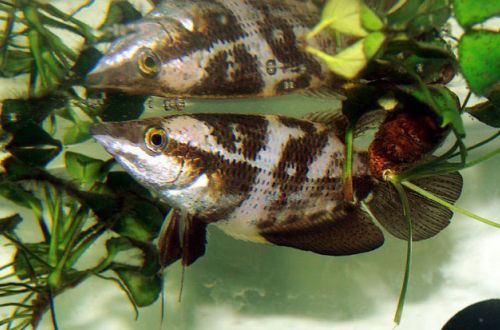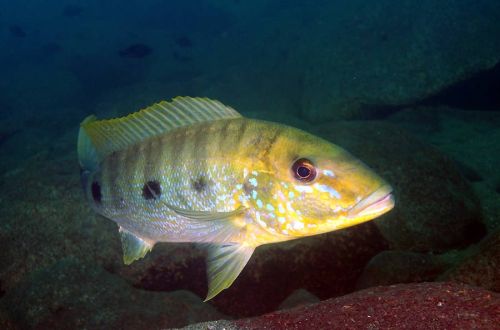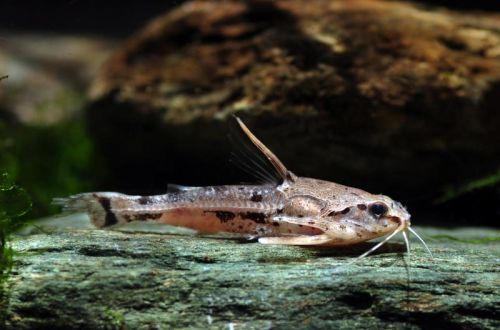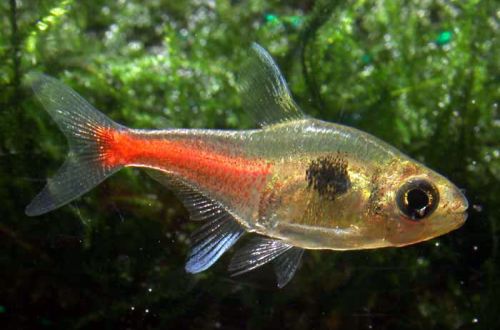
Pensive gourami
The thread-bearer, Ctenops noble or Pensive gourami, scientific name Ctenops nobilis, belongs to the Osphronemidae family. Unpretentious and hardy species, easy to keep and breed. Males are very belligerent, which limits the circle of possible neighbors.

Contents
Habitat
It is found throughout the basin of the Ganges and Brahmaputra river systems on the territory of modern eastern India, Nepal, Bangladesh and Bhutan. The habitat is unstable, during the monsoon season (July-September) heavy precipitation falls, significantly raising the water level in the rivers and changing their hydrochemical composition.
Brief information:
- The volume of the aquarium – from 100 liters.
- Temperature – 15-25°C
- Value pH — 5.0–7.5
- Water hardness – soft (1-12 dGH)
- Substrate type – any soft
- Lighting – subdued
- Brackish water – no
- Water movement – little or no
- The size of the fish is up to 10 cm.
- Food – any food
- Temperament – conditionally peaceful
- Keeping in a male/female pair or a small group like a harem
Description
Adult individuals reach a length of about 10 cm. The shape of the head is pointed, the lower jaw is somewhat longer than the upper one. The body pattern consists of a combination of irregularly shaped brown and silver markings, the patterns are individual for each fish. There is a dark dot at the base of the caudal fin. In males, the tail has a red border.
Food
In the wild, they feed on small crustaceans, insects and their larvae, worms and other zooplankton, so live or frozen foods (bloodworms, daphnia, brine shrimp) should be included in the diet along with dry food.
Maintenance and care, arrangement of the aquarium
The optimal tank size for keeping one pair of noble Ctenops starts from 100 liters. The fish prefer subdued light and do not tolerate internal current, so the aquarium equipment is adjusted accordingly. Otherwise, they are completely unpretentious and thrive in a wide range of temperatures, pH and dGH. During the summer, they are even able to live in open backyard ponds.
In the design, thickets of shade-loving plants, including floating ones, are usually used, a sandy substrate with shelters in the form of snags, decorative objects (wrecks, castles, etc.) or ceramic crusts overturned on their side.
Aquarium maintenance comes down to regular cleaning of the soil from organic waste and weekly replacement of part of the water (10–15% of the volume) with fresh water.
water conditions
Temperature: In accordance with seasonal temperature fluctuations in nature and comfortably between 15 – 25 ° C with even greater extremes, time is carried over for short periods. In many/well insulated houses artificial heating is not required, but if you want to keep it at a constant temperature somewhere in the middle of the range suggested above should suffice. An increase in temperature may lead to an increase in aggressive behavior or the fish may even stop feeding.
Behavior and Compatibility
Males are aggressive towards each other and arrange fierce fights for territory. In relation to other species, they are restrained, with the exception of breeding periods. There was also a change in behavior not for the better at high temperatures (above 25°C). As for the females, they are quite peaceful.
To avoid conflicts, it is recommended to keep one male in the company of several females; as neighbors, pick up peaceful schooling fish of a similar size from among the cyprinids.
Breeding / breeding
This species has well-developed parental instincts, the duty of preserving future offspring is assigned to males. The beginning of the courtship period is initiated by the female or the alpha female if there are several females in the aquarium. The fish begin to spin in a kind of dance almost in a vertical position with their heads down. Then a small number of eggs and seeds are alternately released, the male takes the fertilized eggs into his mouth. At the end of spawning, which can last several hours, the male takes refuge in a quiet place in the aquarium to bear future offspring.
The incubation period lasts from 7 to 20 days, all this time the male refuses food. The fry appear fully formed and immediately begin to swim in search of food. If there are other fish species in the aquarium, it is advisable to transplant the juveniles into a separate tank with identical water conditions, this will significantly increase their chances of survival.
Fish diseases
The main cause of most diseases is unsuitable living conditions and poor-quality food. If the first symptoms are detected, you should check the water parameters and the presence of high concentrations of hazardous substances (ammonia, nitrites, nitrates, etc.), if necessary, bring the indicators back to normal and only then proceed with treatment. Read more about symptoms and treatments in the Aquarium Fish Diseases section.





